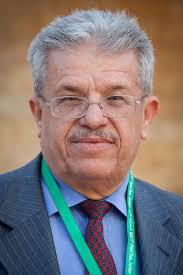You are here
Jordanian scholar explores trade routes linking civilisations during antiquity
By Saeb Rawashdeh - Aug 09,2020 - Last updated at Aug 09,2020

Excavated structures at Tell es-Sayddiyeh, located on the East Bank on the midway between Tiberias Lake and the Dead Sea (Photo courtesy of ACOR/Jane Taylor collection)
AMMAN — Trade and trade networks had a great impact in linking civilisations to both urban centres and undeveloped peripheries, said a Jordanian scholar.
The trade between Egypt and the southern Levant gradually increased in the three phases of Early Bronze Age (circa 3,300-2,200 BC), noted President of Yarmouk University Zeidan Kafafi in a recent interview with The Jordan Times.
The evidence of first interaction between Egypt and the southern Levant is based on excavations, said the archaeology professor.
The idea of Egyptian military campaigns or political domination on the south of the Levant has been discarded by some scholars, according to Kafafi.
“Actually it may be assumed that the presence of the Egyptians in the southern Levant was motivated by economic interests,” he noted.
Moreover, one has to take into consideration that the Egyptians may have had imported the copper ore from Wadi Araba region, and for this reason a chain of settlements had been established alongside the trade route leading from this area to Egypt, Kafafi elaborated.
The scholar pointed out that there are copper deposits in the mountains of Egypt’s eastern desert, but the earliest attempt at mining them was during the reign of the 12th Dynasty (1991-1783 BC).
One the other hand, people from the southern Levant had a commercial interest to import goods from Egypt, the archaeologist highlighted, adding that regarding the Jordan Valley, during the Early Bronze Age I and Early Bronze Age II and III, merchants travelled to the Jordan Valley with either local or imported goods while the economy during these periods was based on agriculture and animal breeding.
“The surplus from this production was used in trade,” Kafafi said.
In the Early Bronze Age II, the relations flourished between Egypt and the southern Levant and it has been attested by the large number of clay vessels found in Egypt that were produced in Palestine as well as the increased exploitation of copper in Wadi Feynan, some 230km southwest of Amman, he said.
Khirbet Kerak at the southern outlet of Lake Tiberias is considered as one of the most important Early Bronze age localities in the Jordan Valley due to its massive fortification, public and domestic buildings, Kafafi said.
Other sites include Pella (modern Tabaqat Fahl), Beth Shean (between the Jordan Valley and Jezreel Plain in northern Palestine), Jericho, Tell es-Sayddiyeh (located on the East Bank on the midway between Tiberias Lake and the Dead Sea), Kafafi noted.
“The archaeological survey and excavations conducted in the Jordan Valley from Tiberias Lake in the north to the Dead Sea in the south proved there was a concentration of settlements during the Early Bronze Age I through Early Bronze Age II periods in the area located to the north of the Az-Zarqa River,” Kafafi said, adding that based on the archaeological evidence, trade roots went via the Jordan Valley.
In other words, going east-west and vice-versa the trade operations were mostly active between the settlements located in the Jordanian northern plateau with those located in the north of Palestine, according to the professor.
Related Articles
AMMAN — Cutting wood for metal smelting was vital for inhabitants through different ages as the process of reforesting would take a long tim
AMMAN – The Bronze Age in Greece and Levant was a period marked by great kings and local ”small” kings.
AMMAN — Bayesian modelling, a method of statistical analysis, applied to Radiocarbon dating, has changed perceptions of the Early Bronze Age


















